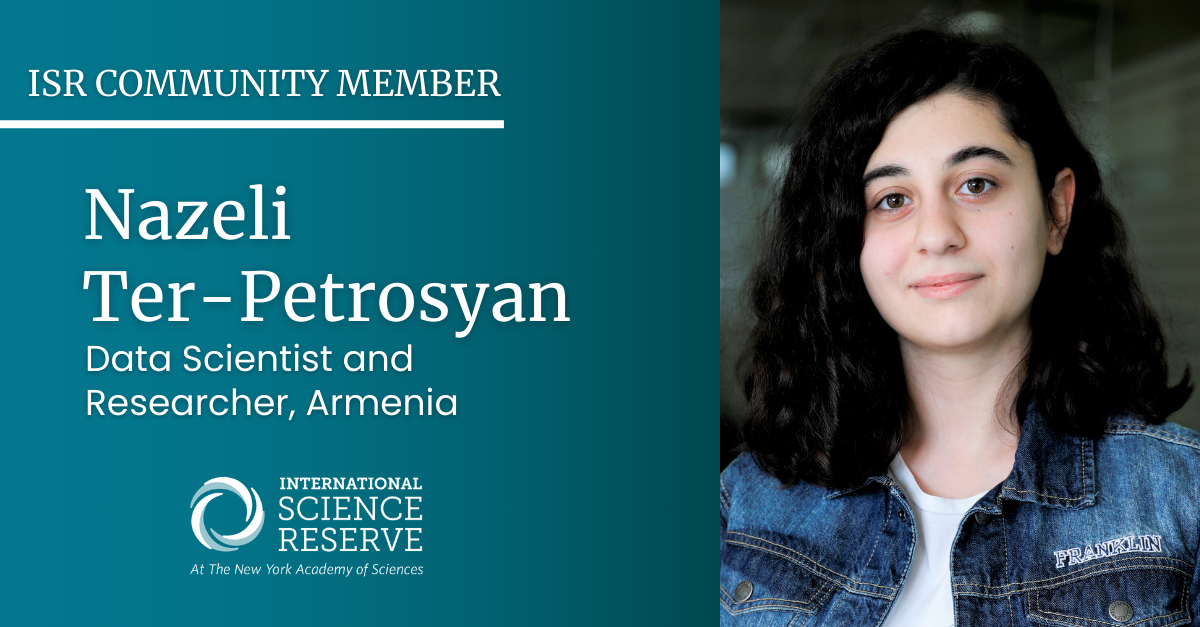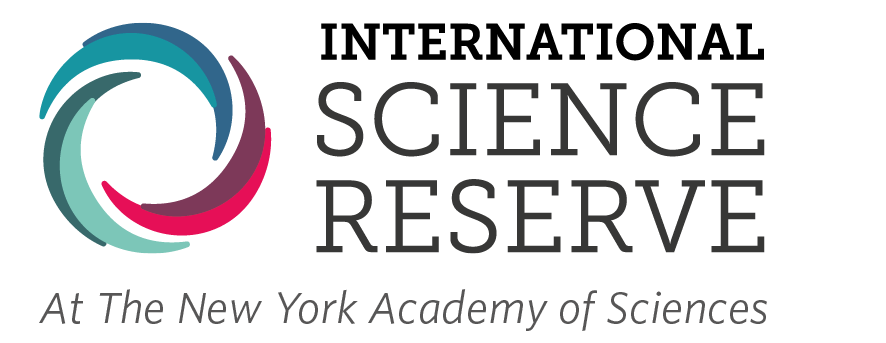This ISR scientist uses e-noses to sniff out disasters before they happen
by ISR Staff

Nazeli Ter-Petrosyan is a data scientist and researcher from Armenia, researching artificial olfactory systems and biomedical image interpolation. She is a founding member and AI Developer at Wearify, a fashion-tech startup, and a data scientist at Opply, a food-tech startup optimizing the supply chain. As a TEDx speaker, young member of the New York Academy of Sciences, and a dedicated volunteer, she is passionate about contributing to and building community knowledge in her field.
Nazeli recently spoke to the International Science Reserve about the role of early career scientists in the initiative, and why she believes others should join her.
How do you envision using your data skillset and scientific interests to respond to crises?
One of my research projects focuses on artificial olfactory systems and their applications in various fields, including healthcare, environmental monitoring, and emergency and rescue services. Electronic noses (e-noses) can be used for the rapid detection of illnesses, monitoring emissions from oil and gas plants, and assisting rescue teams in hazardous environments such as fires. By researching this technology, I aim to contribute to developing tools that can support scientists and emergency professionals during crises.
Another research project I am working on involves biomedical image interpolation. Accurate interpolated images can provide scientists with videos at significantly higher frame rates, enabling the use of tools such as particle tracking for viruses. This can expedite the investigation of new viruses and their spread, ultimately accelerating the development of vaccines.
As an early-career scientist working in the private sector, what made you want to be part of the International Science Reserve?
The COVID-19 pandemic highlighted our lack of preparedness for efficiently managing a global crisis. When I learned about the ISR’s mission to create a global community of scientists ready to respond to various crises, I wanted to be involved. I believe that the initial response and preparedness are crucial in dealing with crises.
By participating in simulations and projects, scientists can develop plans for different scenarios, making it easier and faster to implement these plans when an actual crisis occurs.
How do you hope to contribute to the ISR and crisis response?
I hope to contribute to the ISR by participating in various exercises and discussions with community members. I am eager to collaborate with them to build new solutions and refine existing technologies that can be helpful during emergencies. In the future, I would also love to help organize and develop crisis response plans.
Why should others join the ISR, particularly young scientists?
A major reason to join the ISR is the opportunity to become part of a global network of scientists. The ISR community includes individuals from diverse backgrounds, ages, and career stages, providing a rich environment for growth and learning.
Interacting with scientists worldwide offers invaluable perspectives and insights. Additionally, participating in ISR’s exercises allows you to deepen your knowledge in your chosen field and refine your critical thinking and rapid-response skills.


